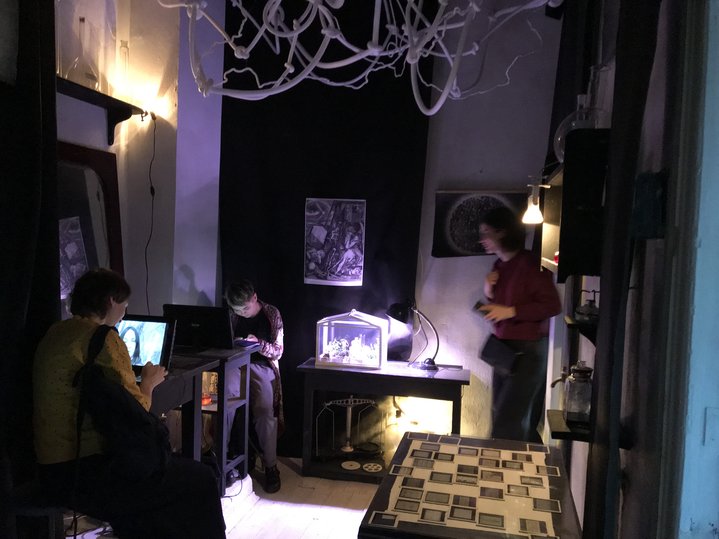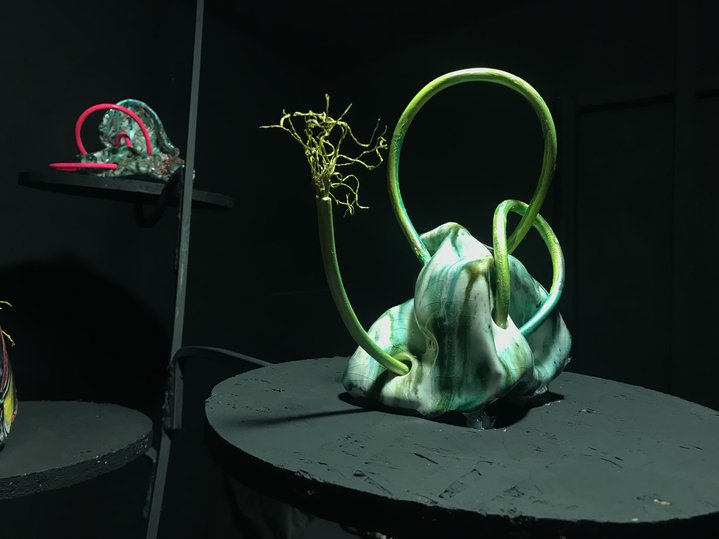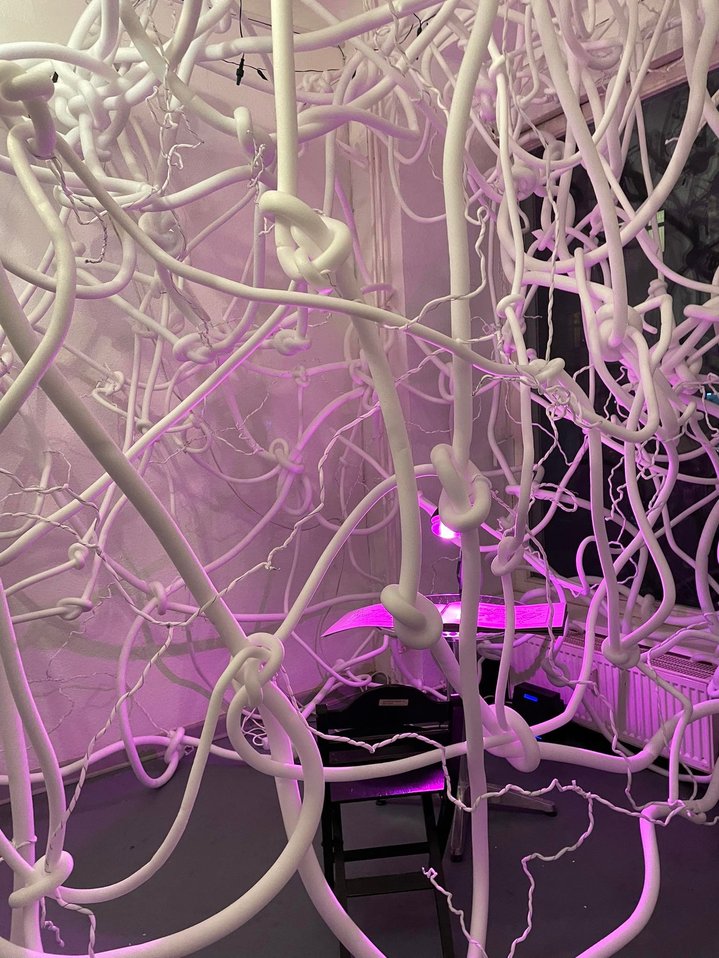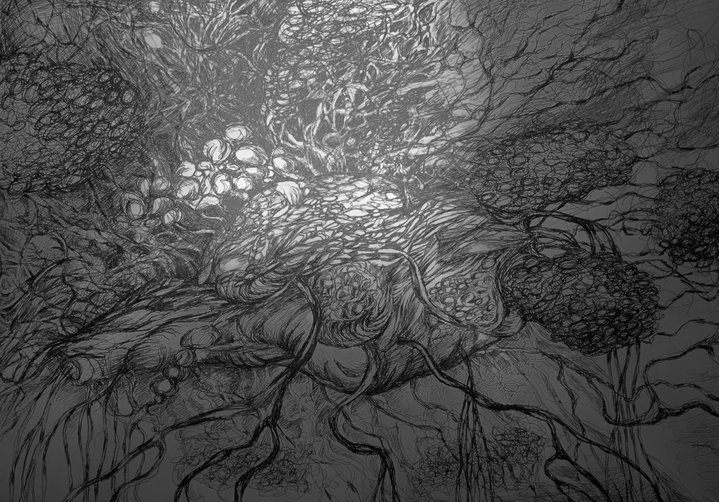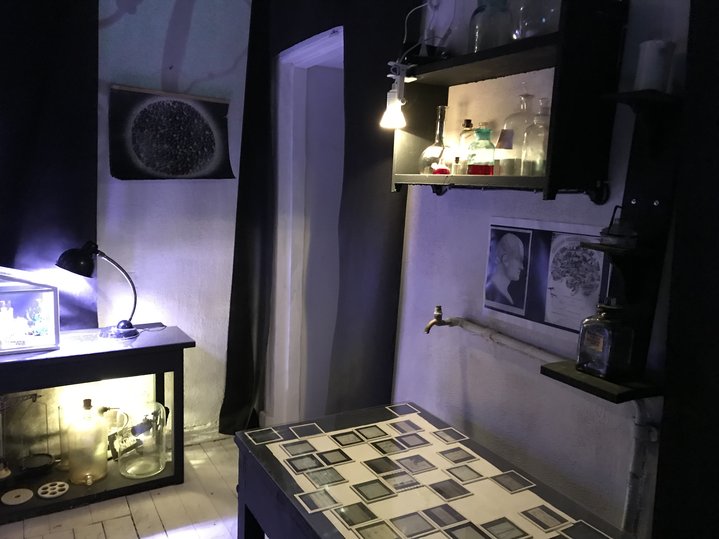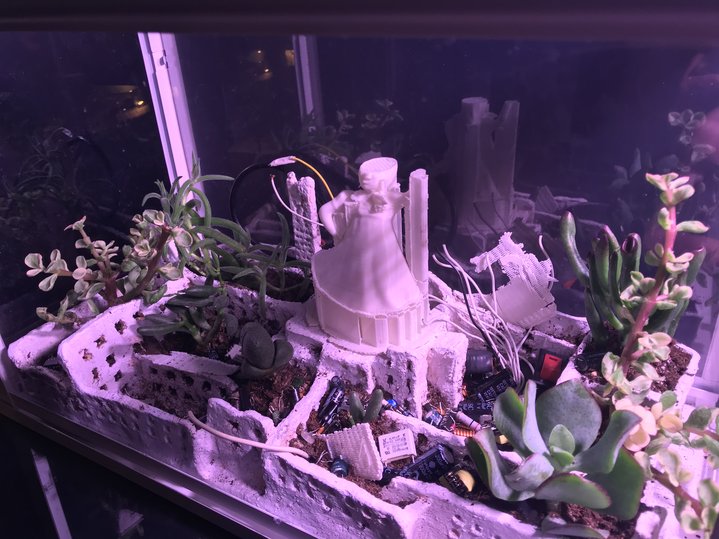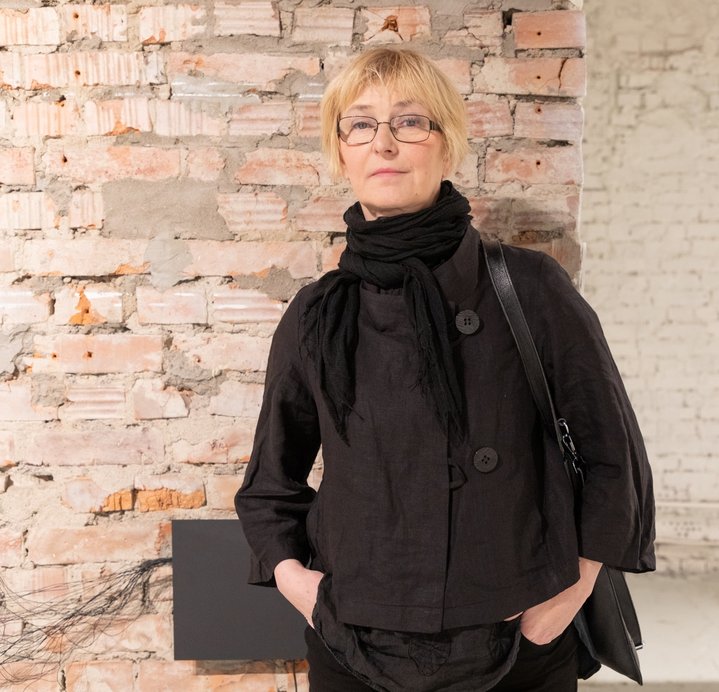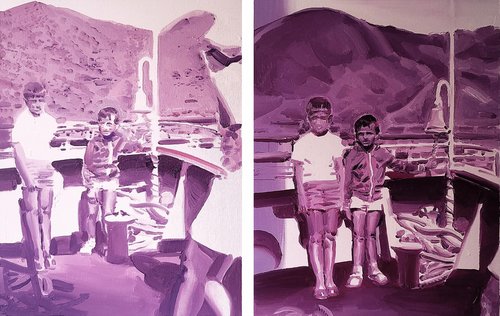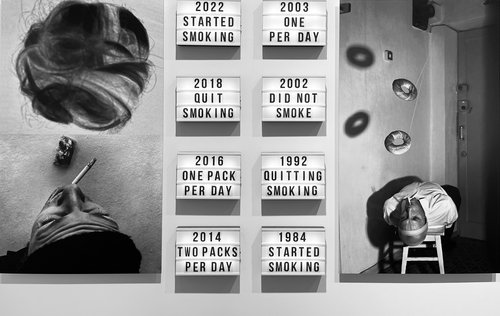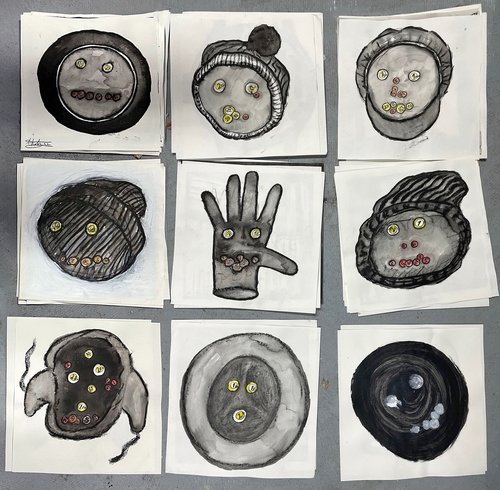Ludmila Belova’s Inner Landscape Unveiled in Berlin

Ludmila Belova. Inner Landscape, 2023. Exhibition at BAS CS Gallery, Berlin. Courtesy of the artist
Dialogues across time and geography mark the work of this Kamchatka-born artist who evokes a new consciousness in which artists are now collaborating above and beyond national borders in ever more complex ways.
Before you even enter the exhibition room in Wedding, through the glass front wall you see something that resembles a brain or circuitry, knitting the space together while incorporating paintings and graphics on the walls. Small lamps flicker between the white synapses: biological brains also talk electricity. In the middle is a place to sit and browse a drawing album, when settled there, you find yourself flooded in a plant-growing red-blue spectrum. Curiously, the installation makes this tiny space feel larger and better organized.
This room, BAS CS (Be Art Sapiens Creative Space) belongs to Kolonie Wedding, a loose union of artist-run spaces around Osloer Strasse, close to the centre of Berlin. The artist currently on show here is Ludmila Belova (b.1960). This installation was first shown in St Petersburg, first at the Sergei Kuryokhin Center for Contemporary Art in 2020 and the following year at the Non-Russian Non-State Museum. Belova has long been fascinated by the brain and its connection to consciousness. For her its very complexity is the answer: “Neurobiologist Konstantin Anokhin examines the problem of consciousness in ‘The Hypernetwork theory of the brain’, where consciousness is a process in the structure of the mind, which is a multi-level structure of a network of networks of networks…” as the artist says.
Born on the Kamchatka peninsula in the Far East of Russia, Ludmila Belova graduated from the Abramtsevo Art and Industry School (now college) in 1980, and later moved to St. Petersburg. Fast forward many years and Belova has become a part of the local art scene. A prolific exhibitor since the early 1990s, working in a multitude of different media, her artistic practices typically include video and audio installation, photography, film, performance and anything in between.
Ludmila Belova has had solo shows at the Russian State Museum, the NCCA in St. Petersburg and Moscow, and the Kuryokhin Centre among others and she has been working closely with commerical galleries like AL, Luda, Marina Gisich. In 2019 just before the pandemic, she also opened her own artist-run space ‘Alexandar’ in Montenegro. She actively works with Cyfest laboratory and the international Cyfest festival that the latter has been organizing since 2007, as well as its curator Anna Frants. Through this collaboration she has reached audiences in Venice, Berlin and New York.
She has become closely associated with St.Petersburg’s ‘lyrical science art’, as defined by Russian art critic Pavel Gerasimenko. Although the artist prefers working with installations, paintings and graphics and does not consider her work to belong to Art and Science, she is interested in bringing new situations to her art. In her video of 2010, ‘La-La Land’, about space debris, there is a subtle border between the sky as it is visible from the ground, and the earth as it is visible from space: this is a border of lost objects, of satellite parts and droplets of fuel. This debris is constantly catalogued and assigned numbers. In the 2016 painting series ‘Free Wifi’, waves flow through closed doors, presented as independent entities. This descriptive approach is also characteristic of the artist duo Elena Gubanova (b.1960) and Ivan Govorkov (b.1949), and other prominent artists from St. Petersburg.
In 2019 Belova began a collaboration with the Techno Art Centre at I.P.Pavlov Museum, in the Physiology Institute of the Russian Academy of Science, in St.Petersburg’s Koltushi suburb where she often participates in group exhibitions. In her current show in Berlin she presents a dialogue with Russian surrealist Pavel Tchelitchew (1898-1957). “I discovered the artist Pavel Tchelitchew, who did not draw the inner spaces of human bodies like anatomical studies, but as part of the visible world. ‘Inner landscapes’ is what he called a series of his works that illustrated a theory of ‘mystic perspective’ he developed in the 1920s.”
This is a representation of the inner world using traditional techniques, as opposed to 3D graphics. Belova sees the human brain, this network of networks, as part of a global whole. In this sense, networking, which has become an important activity for artists these days, is an extension of cerebral functioning. On the other hand, the growth of networking depends on the ability to control one's own lighting. As it goes with plants:“…the consciousness of people living today is flooded with an enormous amount of information, which can be used to manipulate the consciousness in all kinds of ways … Now everyone has their own ‘Post-February’ neural network. It ‘grows’, feeding on media information. The structure of the network forms under the impact of ‘light’ from screens.”
Human being themselves are becoming a rudiment. These days it makes no sense to talk about an artist's origins and school affiliation on the basis of geography: no one sits still, and over the past year many people have left their traditional habitats. Where are they? Armenia, Georgia, Germany, Montenegro, Kazakhstan, America. Their connection with each other and with those remaining in Moscow, St. Petersburg, or Krasnodar is a new complexity.
They are the brain and they are the network.






